The history of the appearance and development of the iron - from coal to modern
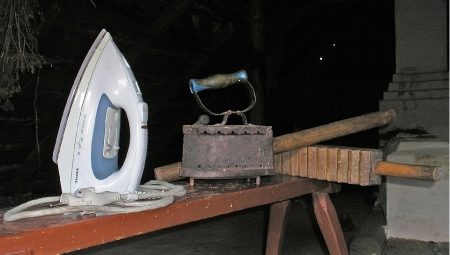
The history of the creation of such a device as an iron goes back centuries. Constantly improving, this device has changed its appearance over the years. The invention and subsequent introduction of irons into everyday life has gone a long way: from models that are extremely dangerous to use due to coal to extremely bulky cast iron products, from alcohol devices to those working on electricity. Nowadays, the iron is considered a completely ordinary and already banal device, and hundreds of years ago it was considered a luxury item and even served as a decoration for any home.
Description and purpose of the device
Experts believe that the word "iron" came to us from the ancient Turkic language, where the word "utyuk" consists of 2 stems: "ut" - "fire", "yuk" - "put".
An iron is a household appliance for ironing linen and various items of clothing. It consists of a heated metal body, a smooth surface on the bottom and a comfortable handle on the top. The principle of operation and the structure of this device are not the most complicated: with the help of an electric current, the spiral heats up to a certain temperature and transfers the heat received to a metal plate, which is called a sole. Modern improved models of ironing devices are equipped with various systems: for example, preventing the appearance of limescale, all kinds of electronic elements and complex regulators, the presence of which can, on the one hand, complicate the entire structure, and on the other, make it more convenient to work with.
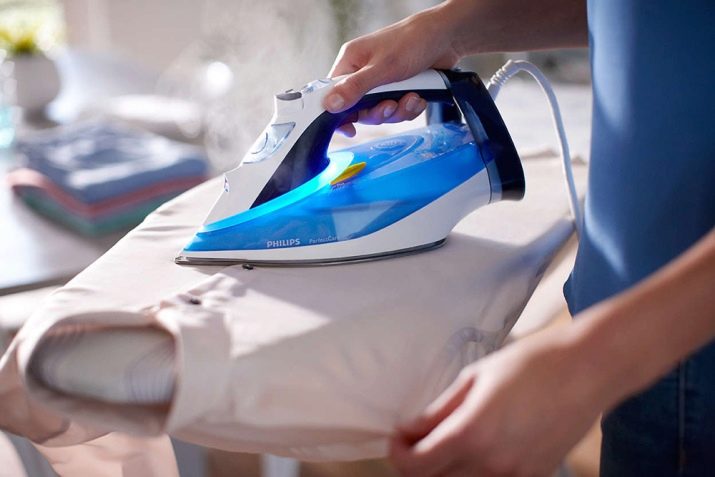
Ancient analogues
Since ancient times, all people have dreamed of providing high-quality care for their garments, so that even after a long wash, they look without bruises and ugly folds. Therefore, for these purposes, most likely, an iron was invented at one time, which over hundreds of years has overcome all periods of its own evolution - from a polished warm stone to an improved type of wireless unit with a steaming function and a power that can be adjusted.
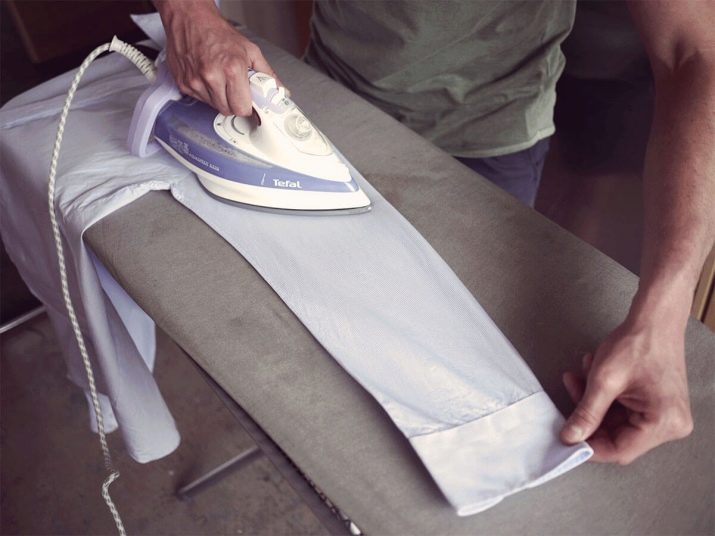
Archaeologists consider flat, specially polished and rather heavy cobblestones to be the oldest prototypes of such devices as irons. Clothes wet after washing were laid out on their leveled surface, another stone was placed on top of it, and all the “ironing” elements were left in this position until they were completely dry. This is how the ancient Aztecs "ironed" their clothes. As a result, in part, many folds from the clothes really disappeared.

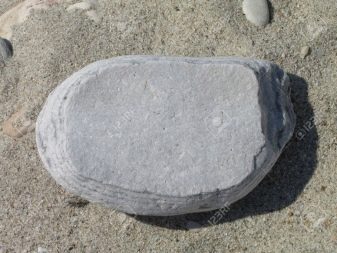
The inhabitants of Ancient Rome "ironed" their crumpled tunics with a rather heavy metal hammer: all the folds on the togas were “knocked out” by multiple blows with this sledgehammer. On the Russian lands, they carried out "ironing" for a long time, using 2 devices at once: a medium-sized stick with a round section, which was called a "roll" or "rolling pin", and a wooden plank with a corrugated surface, which had many names - for example, "ruble", "Rib", as well as "shoulder".
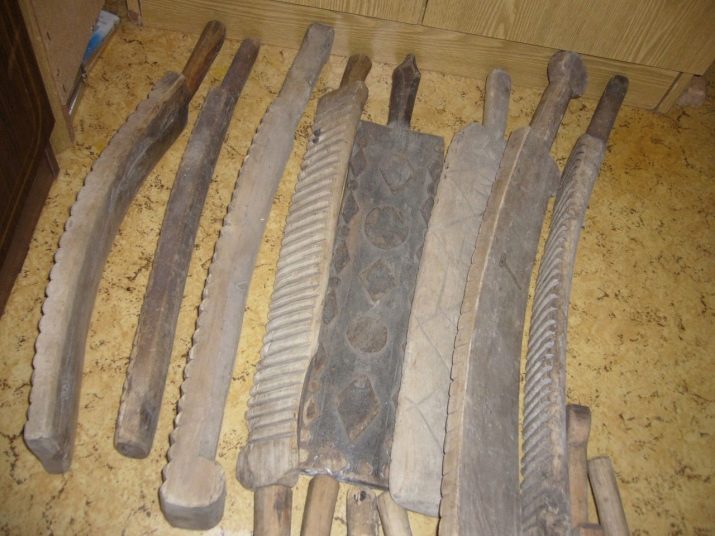
In the 4th century BC, the ancient Greeks used a heated metal rod to iron their clothes. Much later, mechanical methods of ironing clothes are replaced by ironing, where hot metals are used. It was still very far before the emergence of electricity, for this reason people used the most interesting designs. In the Middle Ages, something like a frying pan was used, in which they put hot burning coals and with it ironed their clothes. Of course, this method was extremely uncomfortable and even unsafe, moreover, sparks flying in all directions could leave holes on the linen that was ironed. With the help of such methods, mankind has realized the main thing: ironing clothes is most effective using any hot metal surface.
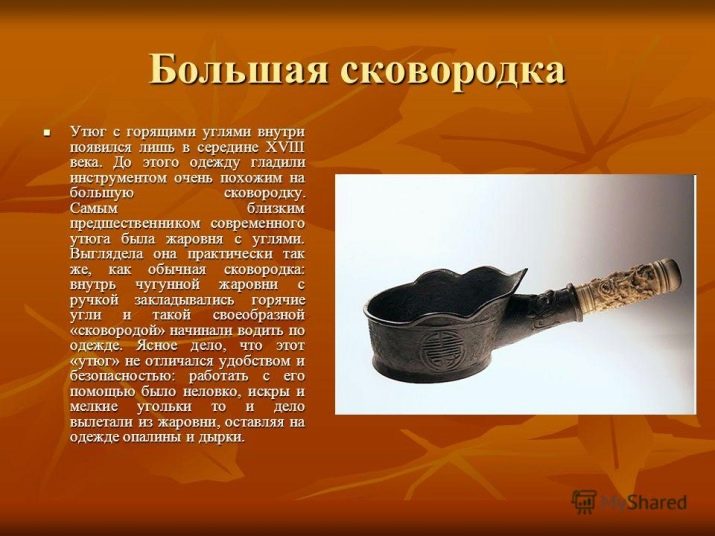
Who invented it and when?
No one will say for sure when and who invented that device, which is now commonly called an "iron" and in which particular country of the world it first appeared. The very first analogue of the iron, as the researchers believe, was born when people created the first woven clothing. Although some eminent archaeologists are completely sure that primitive people also smoothed the skins of animals - most likely with the bones of a mammoth, and this may mean that the name of the creator of the first analogue for ironing will forever be hidden from us.
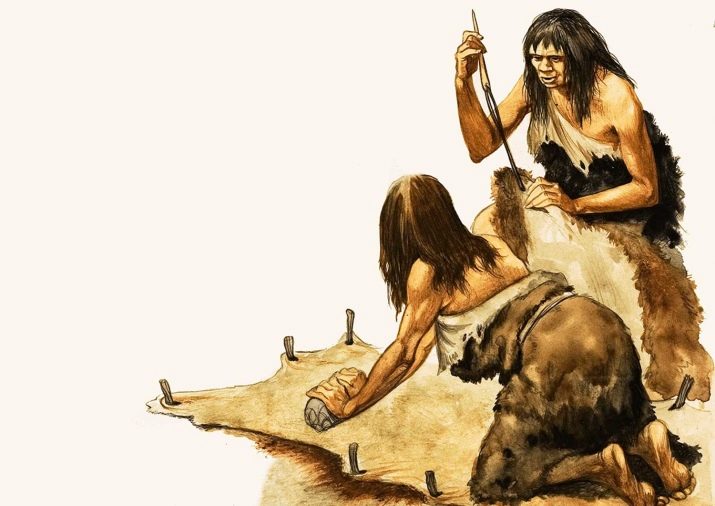
But it is known how the iron was gradually improved. Even in quite ancient times, people quickly came up with and implemented various ways of ironing clothes so that crumpled things after any wash look stylish and not too wrinkled. One of the simplest and most ancient methods, which was actively used by the most ancient people, is still used by many women in the world - simply to stretch a damp cloth on a stone under the scorching rays of the sun. Then most of the washed things will look dull.
The very first recorded evidence that devices such as irons were actively used in everyday life has a date of February 10, 1636, although according to the assurances of experts, the iron appeared in the homes of ordinary people much earlier than this date and today we can safely assume that it is already more than 2 , 5 thousand years. This is the age of those devices that, in their functional features, remind everyone of the now familiar iron, that is, their origin can be dated to about 500 BC. NS.
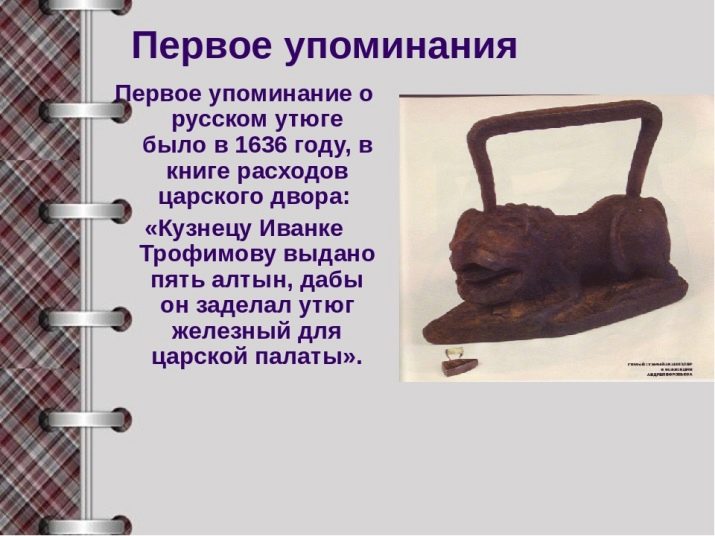
Development history and varieties
The very first mention of an ironing device in Russia occurs in the middle of the 17th century. In 1636, Queen Evdokia first mentioned the word "iron" in her notes.
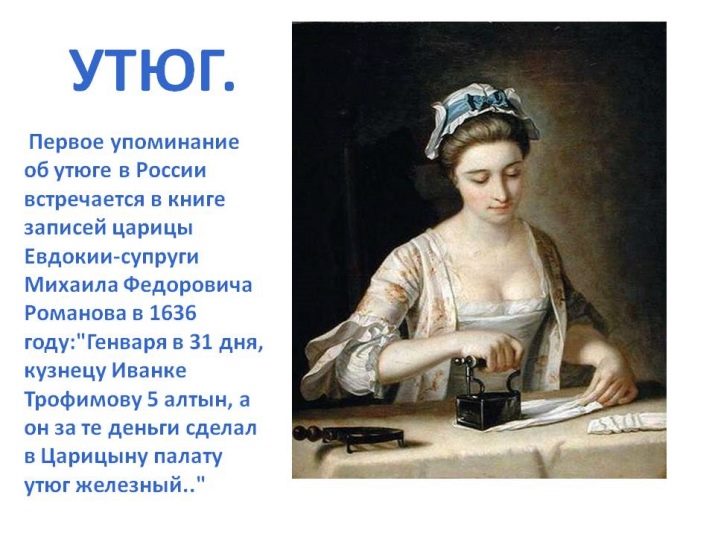
The very first Russian irons began to be produced at the Demidov enterprises. In different regions of the country this convenient household item was called by the townsfolk in different ways - "pralnik", "ruble", and the name "rolling" is also often found.
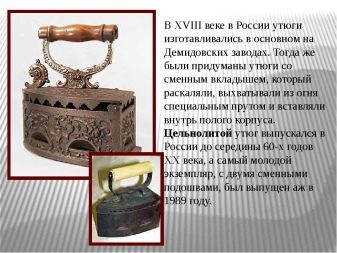
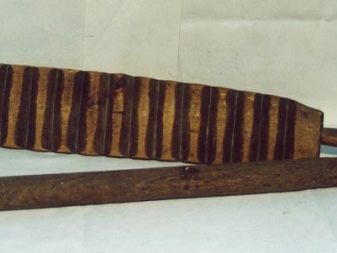
In those days, irons were a real luxury.
During their manufacture, they were decorated with luxurious ornaments, they could even be inherited, which already testifies to how valuable these still primitive devices were in the dwelling. The presence of this device in the house was considered a sign of the family's well-being, since then these devices were extremely expensive. Often, the iron was placed on a napkin next to a hot samovar as an additional decoration for the tea drinking process, or it was installed in the most prominent place of the house and proudly shown to guests.
For the most noble inhabitants, irons of the most incredible types could be produced. - for example, in the form of a rooster or even with a pipe. It was often possible to see on ancient irons even copper inlay on the iron base of the device, and even silver ornaments on irons in the houses of wealthy inhabitants. The handles for these devices were most often made of wood and were for the most part smooth, but could also be curly, depending on the preferences of the owners of the house. In addition, very small irons were produced, which helped to iron complex laces and other smallest details on clothes without any problems.


A little later, a cast iron device appears. It had to be heated over a fire or in an oven before use. This ironing device took a long time to warm up, to work with it, you had to put on gloves on your hands, as the handle became too hot. Soon it was slightly improved and it became possible to remove the handle - one could iron with one base, the other would heat up at the same time. The cast iron product was very heavy and rather massive, for this reason it could iron only very rough fabrics with high quality. A small iron was chosen for ironing delicate materials.
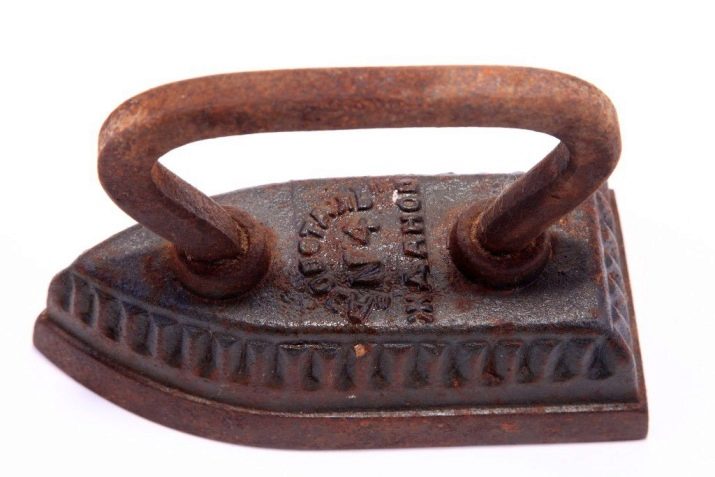
In Germany, 150 years ago, an alcohol device first appeared. Advertisements for such an iron could be read even in magazines published in 1913. The principle of operation of the device was similar to the well-known design of a lamp with kerosene: alcohol was simply poured into the device, it was set on fire, thanks to which the heat necessary to heat the iron was released. Such an old device was lightweight, warmed up rather quickly, and was mobile. But he had one huge drawback - its cost was high and therefore it was used only in wealthy houses.
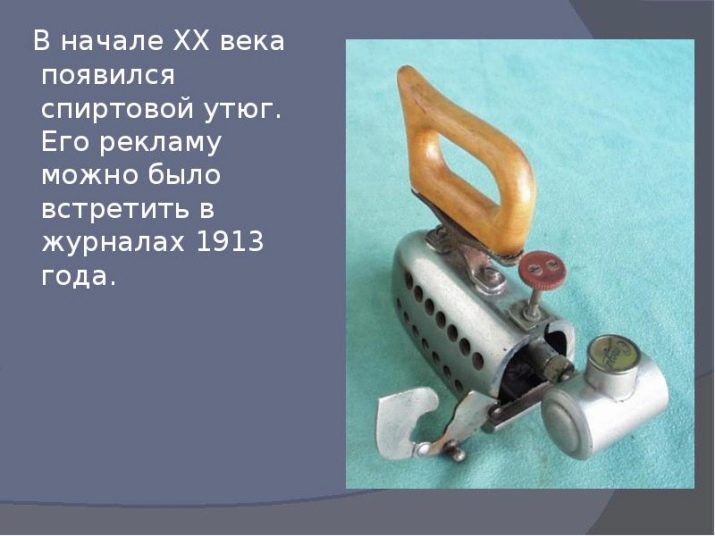
A hundred years ago, "charcoal" or "brass" devices were very popular. They looked like mini-stoves: inside the appliances were red glowing coals. To provide traction, special holes were drilled in the side of the structure. Sometimes the charcoal iron even had a separate smoke outlet. In order to rekindle the already slightly cooled coals, the iron itself was blown hard or actively waved through the holes, although it was not so light.
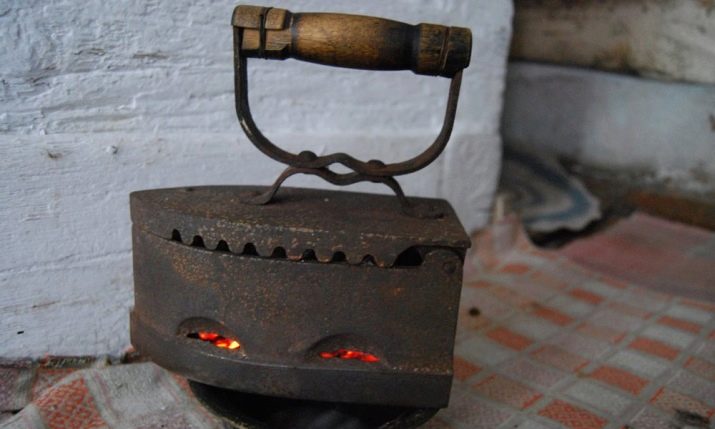
Ironing with a charcoal appliance was more like a strength exercise, so men most often did this in the workshops. A little later, instead of coal, they began to put a red-hot pig of cast iron in the iron.
At the end of the 19th century, the production of "gas" irons began. Such a device was indeed heated with gas. Inside the device was placed a tube made of a special metal that is not afraid of thermal effects, its second end was placed in a gas cylinder, and a pump was placed on top. This was how the gas was distributed inside the device, qualitatively heating its sole during operation.But irons of this kind were almost the most dangerous: gas leaks became a real disaster, because of them often fires and even explosions occurred.
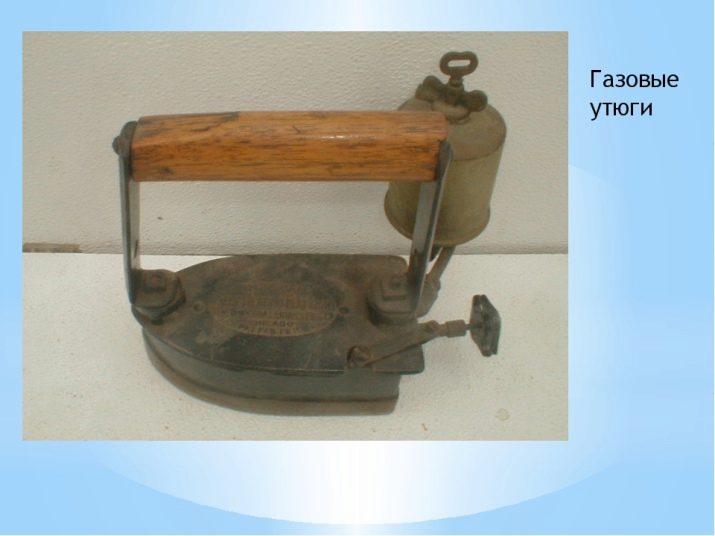
It is worth recalling another rather old type of a popular design for ironing clothes - these are cast iron made of cast iron, which were heated directly on the fire or in the stove. They were first used in the 18th century and were produced in Russia until the 60s of the 20th century. And although it was possible to buy an electrical appliance for a long time, cast irons continued to be popular, because not all houses in those years had sockets.
With the invention of electricity, housewives could breathe a sigh of relief, because many of their problems were being solved. The advent of electricity allowed US citizen Henry Seeley to obtain the coveted patent for the invention of the world's first electric iron in 1882. But its operation was as dangerous as the use of gas appliances - housewives received electric shocks.
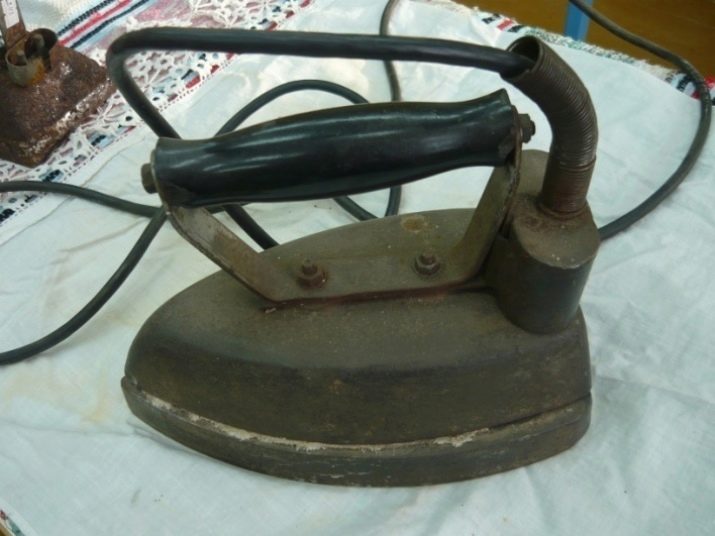
The earliest devices powered by electricity were quite capricious in operation, so in 1892, two companies at once altered the electrical appliance a little, inserting a special spiral into it to heat the sole. The spiral was completely insulated and placed in the body of the product above the sole itself. After this innovation, irons could be considered practically harmless. A device of this kind is used to this day, only small design elements change in its structure and very convenient functions are added.
So, in the 30s of the XX century, one of the main elements appears in the structure of an electrical device - a thermostat, which must control the set temperature and turn off the spiral in time when the required level of heating of the iron base is reached.
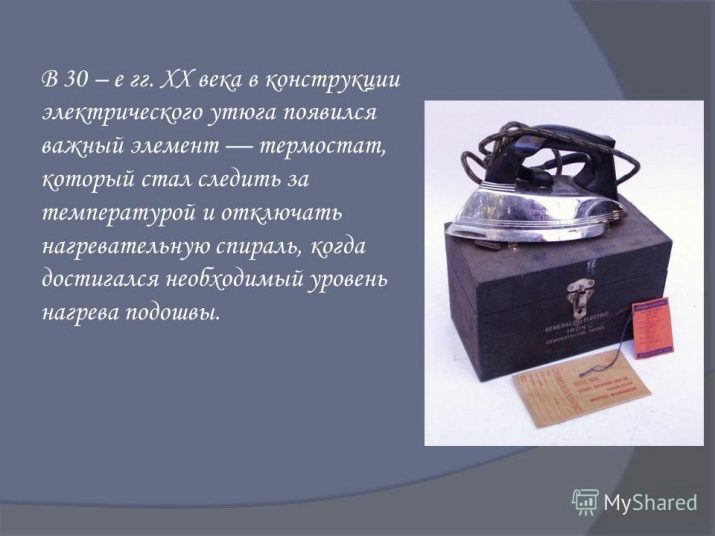
In the 70s, the ironing bases of devices changed significantly: they were no longer made metal, since they began to produce soles made of glass ceramics. The use of new materials has significantly reduced the coefficient of friction of the soleplate of the iron on any fabric. For this reason, these days, all modern appliances slide over fabrics, which makes the ironing process much easier for housewives.
To further facilitate the use of irons, the devices are supplemented with humidifiers. The first designs of these interesting gadgets were quite creative. At the end of the 20th century, 2 German women received a patent for a device, to the spout of which a device with a small glass filled to the brim with water was attached. There was a hole at the bottom of this glass, which was covered by a cork with an elongated handle. It was necessary to lightly press on this handle, and the cork immediately opened, while water instantly splashed onto the dry cloth, making ironing easier. B. Kratz came up with an even more interesting device: he fixed a rubber bulb with small holes on the handle of the device. The pear was filled with water and, if necessary, squeezed by hand - water was actively splashing onto the fabric, making the ironing process more comfortable.
In 1868, a patent was obtained for a musical iron - this unique device made funny sounds at the time of ironing. This strange at first glance invention made it possible to turn the tedious work of ironers into a much more fun action. Handles and cases of this kind of products were often decorated with enamel of different colors, openwork carvings and beautifully painted. And this chic design of the iron was extremely fashionable, so irons with music were produced until the 20s of the XX century.
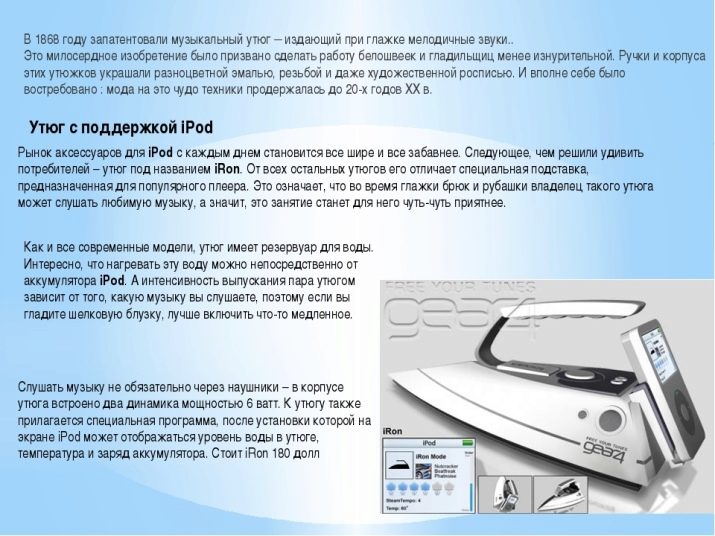
Recently, progress has inevitably expanded the philistine horizons. These new trends also touched upon the familiar irons. One of the most interesting inventions in this area is a unique system called "Laurastar". It can be briefly described as follows: it supplies steam directly to a special ironing board that works simultaneously with the iron.
This principle is completely safe for any type of fabric, moreover, the latest technology allows you to remove not only existing folds, but even odors, and, most surprisingly, it removes stains. Using it, you can remove shiny spots from the fabric, as well as dry the laundry, since the board itself will heat up during ironing.
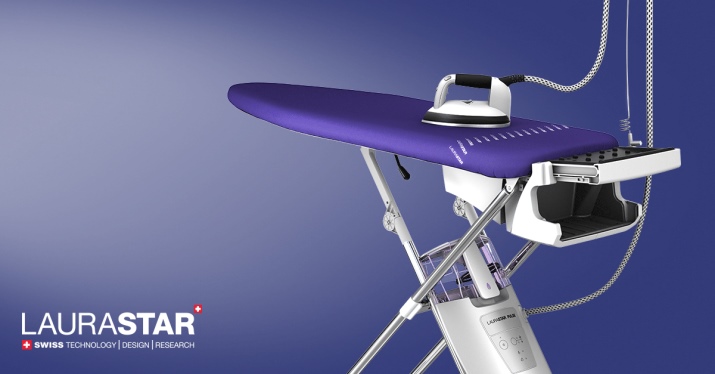
However, today many families are still in no hurry to get rid of old irons, no matter how ancient and primitive they may seem to others. And it doesn't matter what design they have, iron or cast iron, because antique appliances are still highly valued.
You can see more about the history of irons in the next video.








